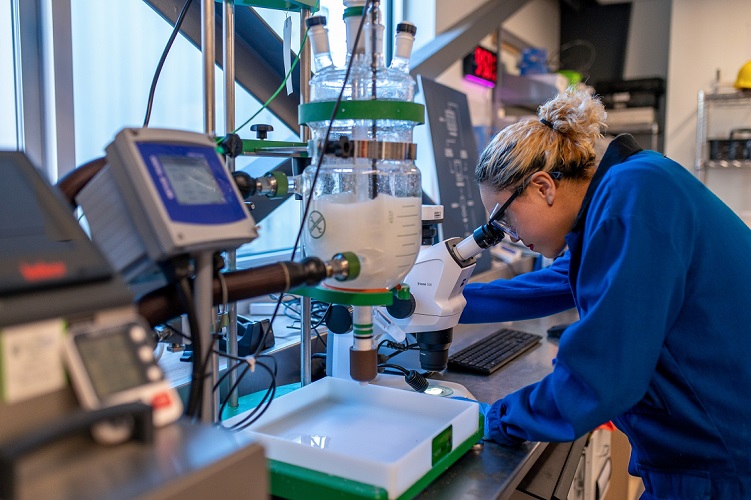In an era where climate change is a growing concern, business executives are leading the charge toward sustainability. As companies strive to reduce their carbon footprint, innovative solutions for removing carbon are emerging as tools for combating climate change. Alongside methods like Carbon Capture and Storage (CCS), a new generation of cutting-edge technologies is gaining prominence.
This article will delve into carbon removal technologies such as Direct Air Capture (DAC), bioenergy with Carbon Capture and Storage (BECCS), and ocean-based solutions, shedding light on their implications and the opportunities they present for thinking businesses.
Direct Air Capture (DAC): Transforming the Atmosphere into a Solution
Direct Air Capture stands as a groundbreaking technology that directly extracts carbon dioxide from the surrounding air, addressing emissions that have already been released. Unlike CCS, which captures emissions at their source, DAC enables the removal of CO2 from the atmosphere itself. For business leaders, this presents an opportunity to redefine their approach to achieving carbon neutrality.
DAC possesses the potential to revolutionize how businesses strive for carbon neutrality. By supporting or investing in projects that focus on Direct Air Capture (DAC) companies can take responsibility for their emissions and strive to achieve carbon neutrality.
Companies like Carbon Engineering and Climeworks are pioneers in this technology, which is becoming more economically viable and offers solutions for businesses that aim to go beyond emissions reduction. Visit this website to learn more about how Direct Air Capture mitigates climate change by extracting CO2 from the atmosphere, providing a scalable and innovative solution for environmental restoration.
Bioenergy with Carbon Capture and Storage (BECCS): A Synergistic Approach to Emissions Reduction
Bioenergy with Carbon Capture and Storage (BECCS) presents an approach to reducing emissions. It combines the production of bioenergy with the capture and storage of carbon dioxide (CO2).
Organic materials such as biomass are used to generate energy, while the CO2 released during that process is captured and stored underground. The dual benefit of energy generation alongside carbon removal makes BECCS an appealing choice for businesses.
For business leaders seeking to address their energy needs while also achieving carbon reduction goals, BECCS provides a solution. By investing in or adopting BECCS projects, companies can align themselves with energy production while actively contributing to carbon mitigation efforts. This approach does not reduce emissions. Also positions businesses as leaders in the pursuit of sustainable energy solutions.
Ocean-Based Solutions: Unleashing the Blue Carbon Potential
Ocean-based solutions are tapping into the potential of carbon by harnessing innovative approaches. The world’s oceans serve as reservoirs of carbon and coastal ecosystems like mangroves, seagrasses, and salt marshes act as sinks for absorbing carbon.
Moreover, there are emerging technologies, like ocean afforestation and algae-based carbon capture, that show promise in removing carbon from the atmosphere.
For business leaders, investing in or supporting projects that focus on removing carbon from the oceans presents an opportunity to contribute to conservation while also mitigating carbon emissions. By forming partnerships with organizations dedicated to carbon initiatives, businesses can play a role in preserving coastal ecosystems and promoting sustainable methods of carbon sequestration.
Implications and Opportunities for Businesses
1. Gaining a Competitive Edge through Carbon Neutrality
Embracing technologies for removing carbon provides businesses with a competitive advantage, allowing them to go beyond simply reducing emissions and instead strive to achieve carbon neutrality. Companies can set themselves apart in the market by participating in or supporting projects that actively extract carbon from the atmosphere.
2. Ensuring Future Success through Regulatory Compliance
As global regulations continue to evolve to address climate change, businesses that invest in technologies for removing carbon position themselves off the curve. Taking measures towards removing carbon demonstrates a commitment to stewardship and helps mitigate risks associated with evolving climate-related regulations.
3. Enhanced Corporate Social Responsibility (CSR)
Investing in projects aimed at removing carbon aligns with CSR initiatives, showcasing a commitment to environmental responsibility and the well-being of communities. Businesses have the opportunity to improve their brand reputation and build connections with customers by communicating their efforts to remove carbon.
4. Ensuring Energy Security through Diversification
For industries that heavily rely on energy processes, innovative technologies like BECCS offer a benefit. Reducing carbon emissions and producing sustainable energy. By diversifying energy sources through technologies like BECCS, businesses can contribute to long-term energy security by protecting themselves from the nature of fossil fuel markets.
Conclusion
Innovative carbon removal technologies are changing the way we perceive sustainability. They provide business leaders with opportunities to tackle the challenges posed by climate change. Whether it’s through Direct Air Capture, Bioenergy with Carbon Capture and Storage, or ocean-based solutions, businesses now have options to actively engage in carbon removal initiatives.
The urgency to combat climate change demands action. Businesses that invest in and adopt cutting-edge carbon removal technologies not only contribute to the future but also position themselves as industry leaders. By integrating these solutions into their strategies, businesses demonstrate their commitment to environmental responsibility, regulatory compliance, and market competitiveness.
By staying informed about these technologies and exploring collaboration and investment opportunities, business leaders can play a role in driving the transition toward a low-carbon economy. As we gaze into the horizon of a future shaped by practices, it becomes crucial to not only take on the responsibility but also invest in pioneering carbon removal technologies. This investment serves as a means to ensure the endurance and adaptability of businesses in an evolving world.
